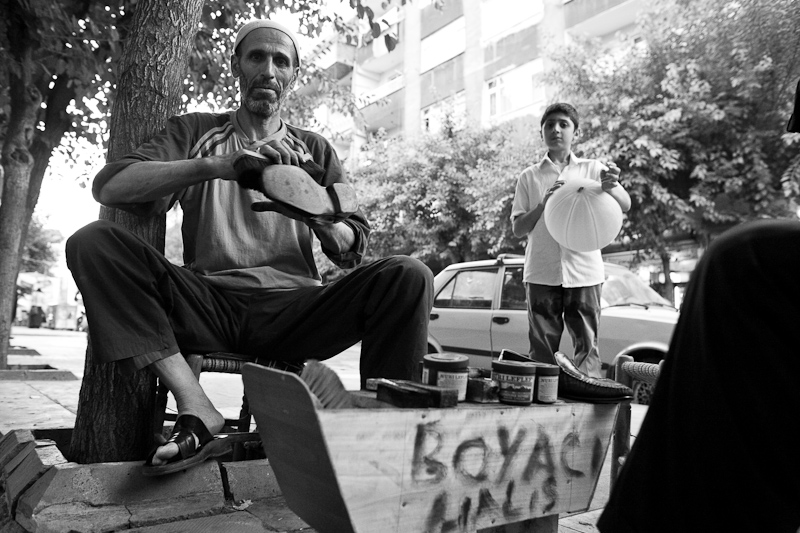
We had one of our best single days in Diyarbakır, thanks to the generosity and eagerness of one man to share his city and culture with two total strangers. We met Muzaffer while walking down the street, in what seemed at first like just another friendly “where are you from?”
It’s a common enough thing for strangers to stop us on the street and ask. It’s also a part of most of our commercial transactions, as normal as making change or leaving a Lira or two as a tip. “Where are you from?”
“Canada,” we’ll say, and usually it ends there. Sometimes someone might go out on a limb, testing their knowledge of geography. “Toronto?” they might ask, hesitantly. “Vancouver?” Almost no one has ever heard of Calgary.
So when Muzaffer stopped us, we assumed the exchange would be along those lines. Instead we found ourselves deep in conversation, talking religion, politics, learning some Kurdish words, and with an invitation to join Muzaffer on a visit to the local community centre.

As the unofficial capital of Kurdistan, Diyarbakır is a conflicted place in many ways. The population is almost entirely Kurdish, and there are strong feelings of discontent with the way Turkey has treated this region and its people. Kurdish nationalist sentiment is extremely strong and widespread, in a way that only suppressed nationalist movements tend to be. Traveling in Western Turkey, we saw newscasts in virtually every city depicting Diyarbakır and other cities in the east as places constantly on the brink of riots, with dramatic stock footage of clashes between police and protesters backed up with a musical score that would make Hollywood proud. These newscasts superimpose these images with flashing banner text that decries the “Terrorism” of the Kurds and often cut to shots of soldiers’ funerals. Based on talking to people in the western part of the country, these sensationalist news reports are very good at doing what they’re designed to do: generate fear. Fear of terrorism, fear of the Kurds, fear of the breakup of Turkey. Over 30 Turkish soldiers have been killed in the fighting in recent months.
I won’t claim to be an expert on this situation, or all of the historical causes, or who’s right and who’s wrong on any given issue, but I do know that the Kurds have as legitimate a claim to autonomy as any other ethnic group, and that Turkey’s efforts at assimilation and suppression of Kurdish nationalism and Kurdish culture have often been brutal. The Twentieth Century saw a longstanding guerilla war between Kurdish separatists and the Turkish military. Executions and atrocities were carried out on both sides, and a guerilla war is still being waged in southeastern Turkey. Collective punishments have been commonplace, including withholding much needed funding for economic and community development. For years the Turkish government banned Kurdish language and even forbade naming children with Kurdish names. Even the name of the city is contested: officially it is Diyarbakır, but to every Kurd within it, is known by its Kurdish name, Amed.
So perhaps Muzaffer’s hospitality is one way for him to defend the heritage he and all Kurds hold so dear. Aside from just being a good guy (which he certainly is), showing foreigners around his city is a way to show off its Kurdish roots. It is an explicit acknowledgment that Kurdish culture is unique and distinct; Kurdish hospitality sincere and genuine. For us it was both fascinating and enjoyable, to see Amed through local eyes. We saw live music in both newer and older traditions, toured some of the city’s 6km of old walls, and enjoyed dinner, tea and plenty of conversation before capping the night with a few riddles. Thanks again Muzaffer!














Leave a Reply